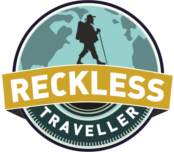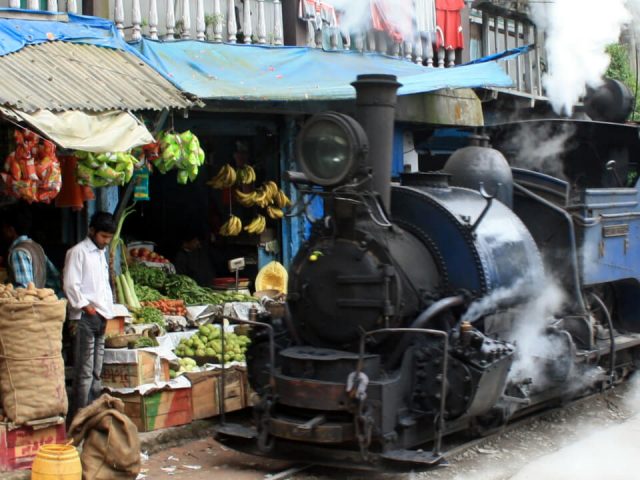This train is bound for glory
Woody Guthrie (1912-1967)
What holds more promise of adventure than hopping a freight-car at the edge of town? I always wanted to give it a try, but never quite summoned up the nerve. I may yet.
My wife and I, however, had a brush with something similar. In July, 1969, we arrived in Brindisi, Italy after a bruising 14-hour train ride from Bolongna. We had no place to stay that night and little money. Out of the dark materialized two young touts, full of smirks and winks and offers of assistance. One of their suggestions was that they escort us around the corner to a certain hotel they’d recommend. We followed them, with great misgiving; what were we getting into?
The hotel was dark and downright eerie, and to have stayed there would have blown our budget. There was nothing for it but to head back to the rail yard to review our options. We were in luck: we found a detached flat-bed rail car and climbed aboard.
We spent that long, breathless, mosquito-ridden night trying to sleep, without benefit of bedding. We were hobos for a night.
It was truly an awful night, but certainly a memorable experience. We laugh about it to this day. Young travellers love to collect “experiences” which the mind gradually transmutes into memories – things they can relate to their children and grandchildren. Memories give travel its enduring value; and in my books, tough experiences make better, clearer memories than easy ones. No contest.
Due to my lack of personal experience in jumping on and off moving rail-cars, I have consulted others – experts in the field. I thought the days of train-hopping had faded into history, but I was wrong; I’m delighted to find that people are still doing it – for business and pleasure – all over the world.

The practice goes by several other names: freight-hopping, train-surfing, train-hitching or catching-out.
The cover of William Saroyan’s classic novel The Human Comedy depicts a little fellow of about three in coveralls and bare feet waving to someone on a passing train. In Don Freeman’s touching sketch, you can clearly see a black man standing in an open boxcar, waving back. The little boy is wearing a huge smile; so, we imagine, is the man. What could be going through their minds? I think they rather envy one another: we imagine the boy wants to go exploring, and the man wants a family and home of his own.
Train-hopping in America began shortly after the railways were constructed in the 1830s. The upheaval of the Civil War resulted in many men hopping trains for reasons that can be imagined; families and towns were ripped apart, roots severed. After the war, many veterans had no home to return to, nor any means of support. Thus evolved a population of nomads, riding the rails, scouring the country, trying to scratch out a living.
Later, during the Great Depression, vast numbers of men travelled this way, for similar reasons. These men came to be called hobos. The hobo, by definition, was always looking for work. He is not to be confused with the tramp, whose inclination was to work as little as possible, or the bum whose preference was not to work at all.
I love hearing about illustrious characters who’ve done serious “slumming” in their time. Confessed train-hoppers include authors Ernest Hemingway, Jack London and Louis Lamour. Similarly inclined were Supreme Court Justice William O.Douglas and oil tycoon H.L.Hunt. Hunt, incidentally, by 1974 had become the richest man in the world.

My favorite train-hopper, though, is song-writer and activist Woody Guthrie. His influence on modern music is incalculable, mainly through his mentorship of Bob Dylan, recent recipient of the Nobel Prize in Literature. Nice work, Woody.
Dedicated train-hoppers cite several advantages of the practice: there’s no need to trouble yourself about a ticket; there’s lots of nice fresh air; the views can be terrific, and you can avoid the crush of crowds. And besides, it can be a lot of fun, if things go right.
The downside of all this fun, however, is considerable – mainly the threat of death and dismemberment, due to bad judgement, falls and electrocution.
Then there’s there’s the risk of being beaten silly by the Railway Police.
These chaps are known as “bulls”, a distinctly unsympathetic lot. Moreover, I understand many train-hoppers themselves tend to be on the surly, unsavoury side.
Serious train-hoppers try to get hold of an underground document called the Crew Change Guide (CCG), which, I understand, is handed from “hobo to hobo”. It contains much information for the train-hopper – on railyards, security, schedules, maps and such.
The inappropriate distribution of the CCG is strictly forbidden by the train-hopping community, for fear it will fall into the hands of authorities – thus ruining a beautiful thing. The penalty for breaking this rule is unspecified, but certainly severe. Maybe you get tied to the tracks, I don’t know. I’m advised the CCG can be obtained by discreet inquiry around major rail yards.
Although train-hopping opportunities exist in many other countries, the U.S. is probably the best place for it, for two main reasons. First, it’s a large country with an extensive rail-network, and secondly, train-hopping is a definite part of American history and culture. It has a permanent place in the national imagination and in its music, literature and cinema.
If the train-hitching life interests you, you might consider going to the railroad town of Britt, Iowa – the most hobo-friendly place in the country. Britt has hosted the annual National Hobo Convention each August since 1900. It’s the largest gathering of train-hoppers in the country, and serves to “celebrate the American travelling worker”.
Attractions include the Hobo Museum, the 5K Hobo Walk-Run, crowning of the Hobo King and Queen , other extraordinary events. It’s very civilized, they say, and attendees have nothing but fun. It sounds like a total hoot. I may see you there.






Facebook Comments